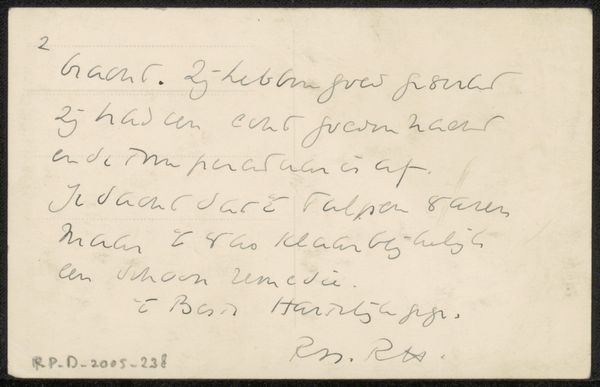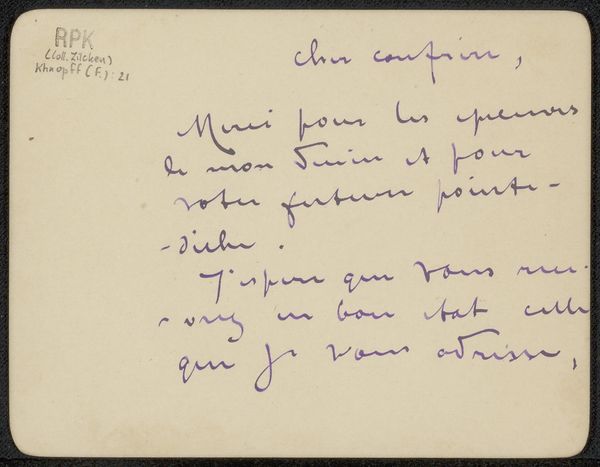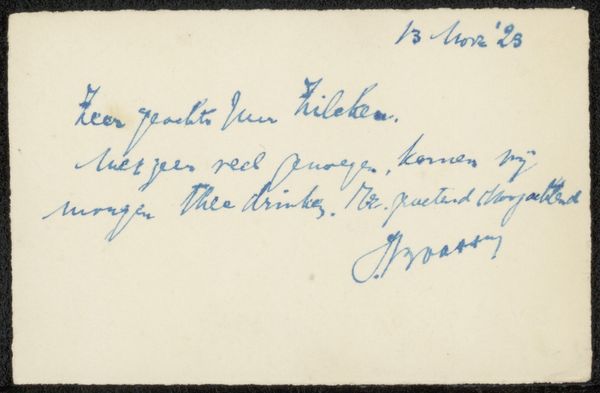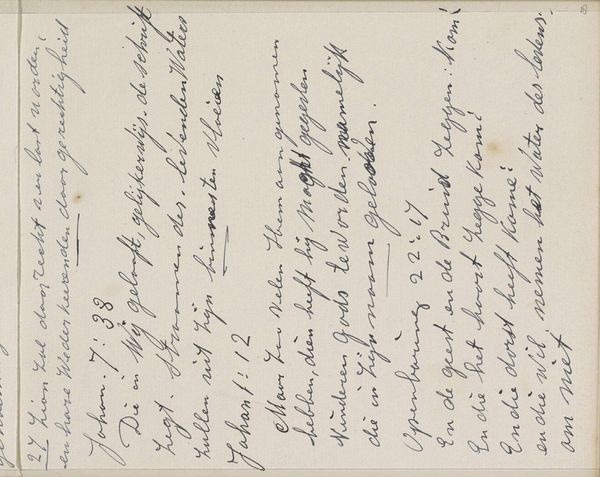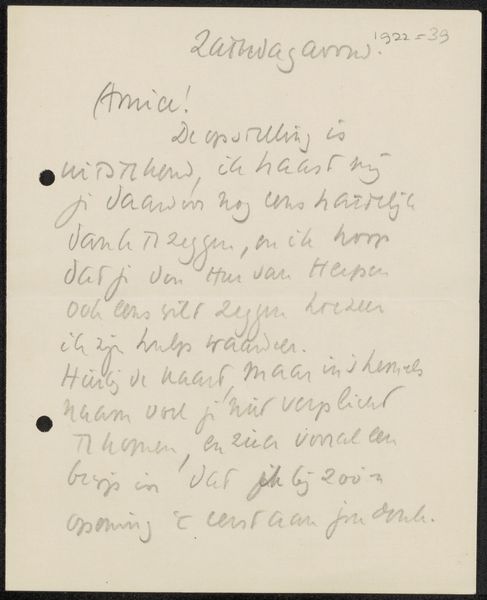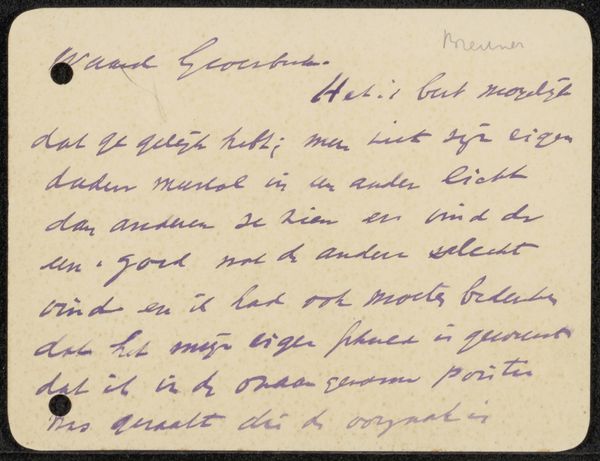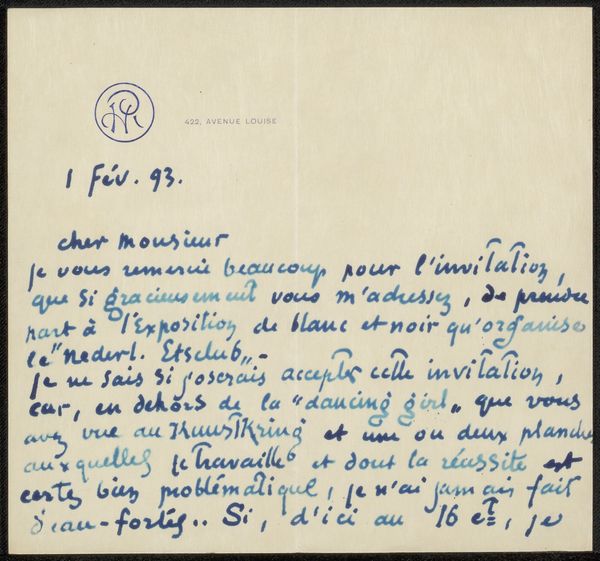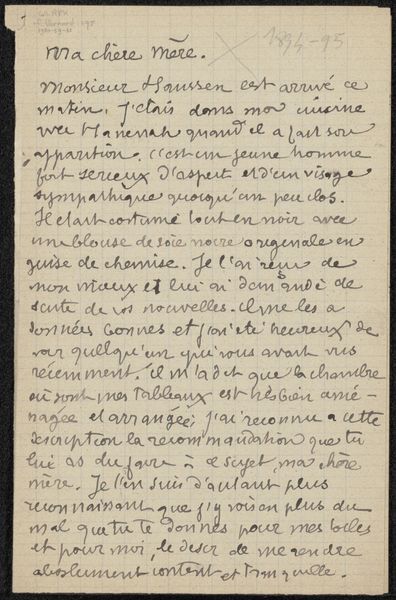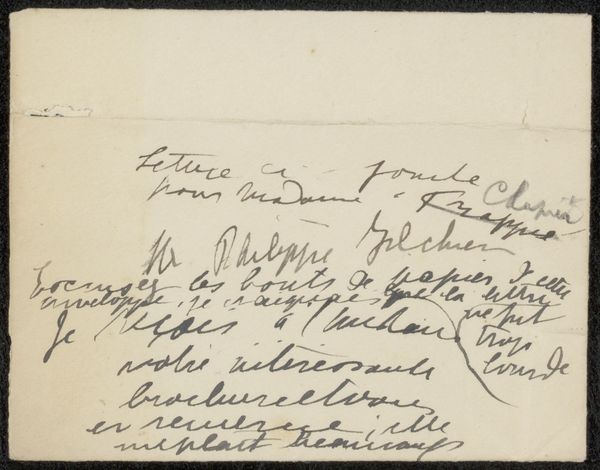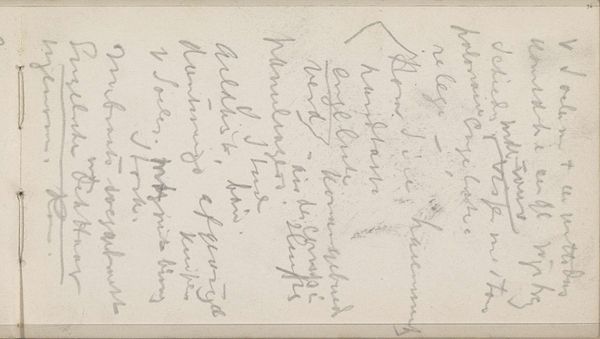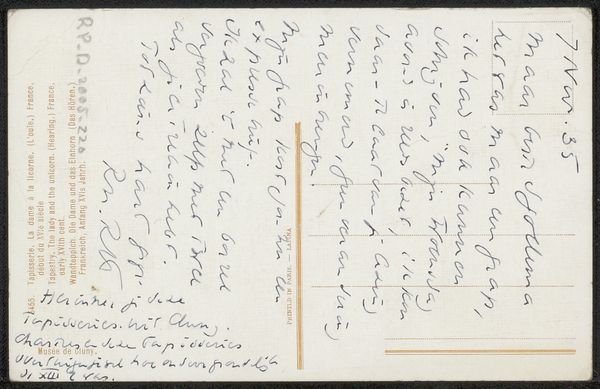
drawing, paper, ink, pen
#
drawing
#
narrative-art
#
paper
#
ink
#
pen
#
monochrome
Copyright: Rijks Museum: Open Domain
Curator: Here we have "Brief aan Philip Zilcken," or "Letter to Philip Zilcken," a drawing made sometime between 1911 and 1930. It’s rendered in ink and pen on paper and is presented in monochrome. Editor: It has a certain intimacy, doesn’t it? Seeing someone’s handwriting like this, almost like intruding on a private thought. The simple materials—pen, ink, paper—really amplify that sense of immediacy. Curator: Indeed. The creation of the image through pen and ink reflects not just artistic choice, but also the everyday resources accessible for personal communication at that time. How this contrasts with today’s methods of instant global messaging, shows how labor shapes our exchange of information. It gives you a window into material culture, doesn’t it? Editor: Absolutely. And considering the act of letter-writing—the postal systems, the expectation of a physical response—places this within a specific network. It makes you wonder about Philip Zilcken. What role did he play in the artist’s life? Was he also embedded in this art world? Curator: Letters were often vehicles for artists to participate in discourse, trade, and relationship-building. It suggests the broader networks through which art circulated and artistic reputations were built during that period. Zilcken may have been part of an influential circle. Editor: Precisely! The unevenness of the ink, the apparent speed of the script… even the blurred marks hint at a practical object, not something overly precious or “high art,” per se. It suggests daily usage. Curator: Agreed. By acknowledging these qualities, we question the traditionally strict boundaries separating “art” from "craft" or mere “communication.” It asks us to value the object for more than just the artist's supposed genius. It asks how art can be a product of labor and necessity. Editor: I agree, considering it from this viewpoint shows a much deeper insight. Curator: Definitely. By moving past conventional boundaries and focusing on the cultural footprint imbedded in this material we unlock a more textured appreciation.
Comments
No comments
Be the first to comment and join the conversation on the ultimate creative platform.
